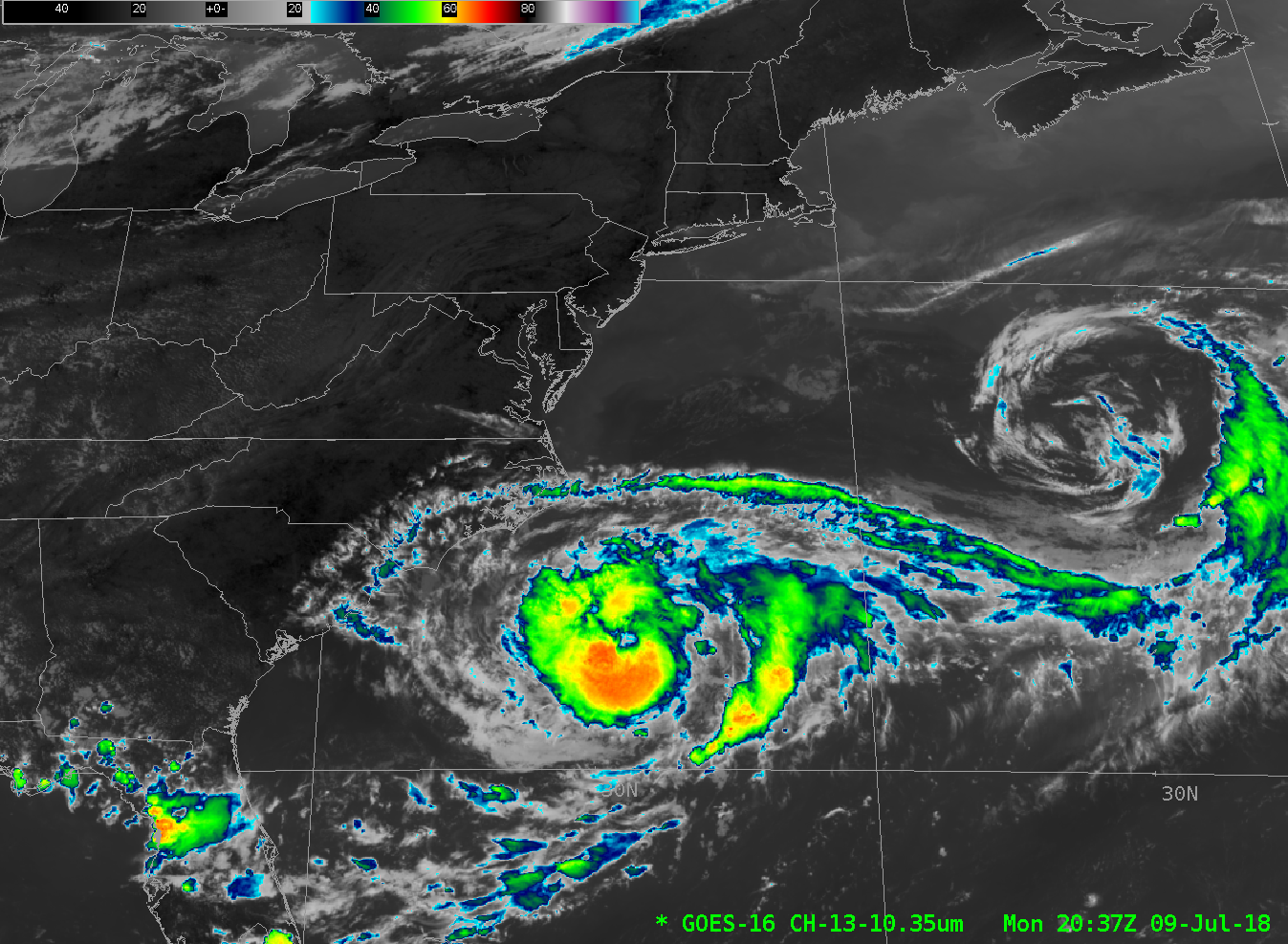The Air Mass RGB views two different cyclones
Two similarly-sized cyclones over the western Atlantic Ocean have very different representations in the Air Mass RGB product. Tropical Cyclone Chris is mostly white surrounded by green. The ‘Red’ component of the Air Mass RGB is the Split Water Vapor Difference Product, and when that value is small, a large red component is present. In tropical airmasses with abundant moisture, the 6.2 µm and 7.3 µm water vapor infrared brightness temperatures are similar. The different colors in the extratropical cyclone to the northeast of Chris arise because of subsiding dry air that affects all three components of the Air Mass RGB product.
One way to help interpret the RGB product is to load all three component parts, as shown below. The Split Water Vapor Difference (Red Component of the Air Mass RGB, upper right), the Split Ozone Difference (Green Component of the RGB, lower left) and the Upper Level Water Vapor (6.19 µm, Blue Component of the RGB, lower right). These are shown in 2037 UTC in the default enhancement, and then color-coded Red, Green, Blue using the Brightness Temperature limits in the RGB definition.

Air Mass RGB (Upper Left), Split Water Vapor Difference (Upper Right), Split Ozone Brightness Temperature Difference (Lower Left) and 6.19 Upper-level Water Vapor Imagery (Lower Right) at 2037 UTC on 9 July (Click to enlarge)
Added: The Band 13 image (Clean Infrared Window, 10.3 µm) for 2037 UTC is shown below.
Thanks to Paul Ford, ECC Canada, for alerting us to this very interesting juxtaposition!



